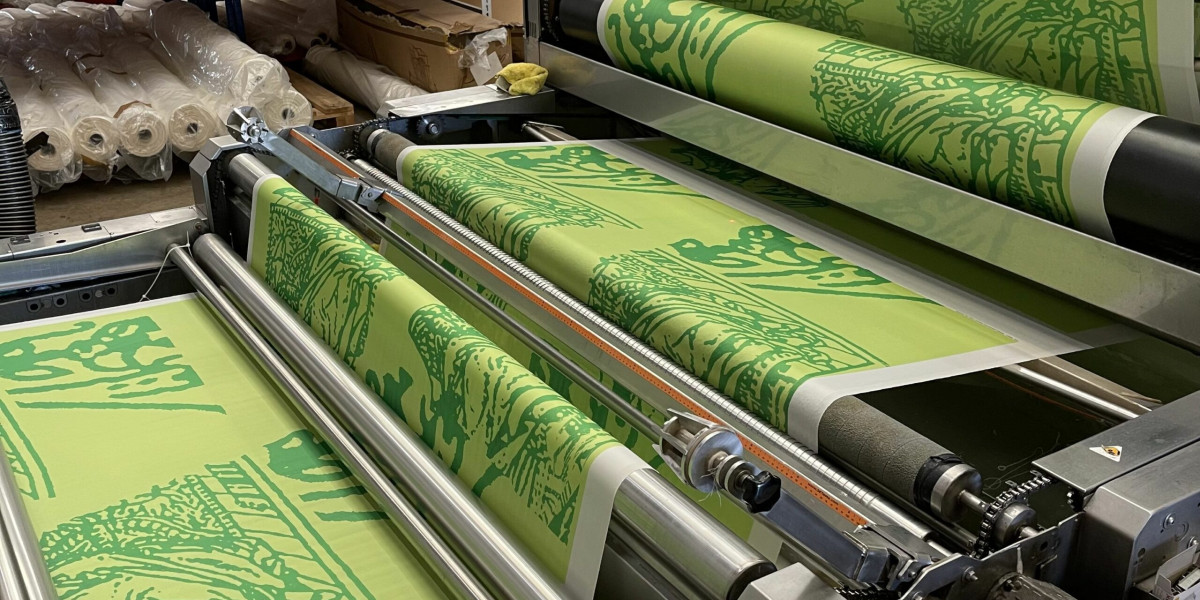The fashion industry has long been associated with creativity and innovation, but it is also one of the world’s largest contributors to pollution and waste. As the global demand for clothing rises, so does the environmental cost of production. Traditional textile printing methods consume vast amounts of water, release harmful dyes, and generate excess fabric waste. However, a major transformation is underway. Digital printing technology is helping designers, brands, and manufacturers adopt more sustainable fashion practices without compromising on design quality or aesthetics.
Digital textile printing has introduced a cleaner, faster, and more efficient way to bring creative visions to life. By using advanced printing equipment that applies color directly to fabrics through precise inkjet technology, it eliminates many of the resource-heavy steps found in conventional printing. This shift not only reduces environmental impact but also opens the door for more responsible production models.
The Environmental Advantages of Digital Fabric Printing
One of the key reasons digital printing is considered sustainable lies in its minimal water consumption. Traditional textile printing can use thousands of liters of water just to produce a few meters of printed fabric. Digital fabric printing, on the other hand, requires very little to no water, as dyes are transferred directly onto the fabric using eco-friendly inks. This drastically reduces water pollution and waste.
Additionally, the process significantly cuts down chemical usage. Conventional dyeing and printing often rely on harsh chemicals and fixatives that are difficult to treat before disposal. Digital printing uses water-based or pigment inks that are free from heavy metals and harmful compounds, making it safer for both the environment and the workers involved.
Reduced Fabric Waste and Energy Efficiency
In sustainable fashion, reducing material waste is crucial. Digital fabric printing supports on-demand production, allowing designers to print only what is needed. This prevents the large-scale overproduction commonly seen in fast fashion, which often leads to unsold inventory and textile waste. Because digital printing allows for small batch production, it aligns perfectly with the growing “slow fashion” movement that values quality, sustainability, and customization.
Energy efficiency is another major advantage. Traditional printing processes require multiple steps like screen preparation, washing, and drying, which consume large amounts of electricity and fuel. In contrast, digital printers streamline the process, using less energy while maintaining high-quality output. This efficiency translates into lower carbon emissions across the production chain.
Supporting Ethical and Localized Production
Digital printing also encourages localized manufacturing. Since designs can be printed digitally in small quantities, brands no longer need to outsource massive orders overseas. This supports local businesses, reduces transportation emissions, and shortens supply chains. By embracing digital printing, many fashion brands are taking significant steps toward ethical production practices and fair labor conditions.
Furthermore, the flexibility of digital fabric printing empowers independent designers and small-scale fashion entrepreneurs. They can experiment with unique designs, print limited editions, and create sustainable collections without the need for heavy industrial setups. This democratization of fashion design contributes to a more balanced and transparent fashion ecosystem.
Innovation and Creative Freedom
From a creative standpoint, digital printing offers unlimited design potential. It allows designers to explore complex patterns, vivid colors, and intricate details with precision and consistency. The ability to print directly from digital files eliminates the limitations of traditional methods, giving designers full control over their artwork.
Beyond creativity, innovation in printing technology also leads to better fabric performance and longevity. Modern digital inks penetrate fibers more effectively, resulting in vibrant, durable prints that resist fading. This longevity contributes to sustainability by extending the life cycle of garments, reducing the frequency of replacements and waste.
Challenges and Future Opportunities
While digital fabric printing provides clear sustainability benefits, the industry still faces challenges related to scalability and cost. High-quality digital printers and inks require significant investment, which may be challenging for smaller manufacturers. However, as technology becomes more accessible and efficient, these barriers are gradually decreasing.
Looking ahead, advancements in biodegradable inks, recyclable fabrics, and closed-loop production systems will further enhance the sustainability of digital printing. Many leading fashion brands are already integrating digital printing into their eco-friendly collections, proving that innovation and environmental responsibility can go hand in hand.
FAQs
How does digital printing differ from traditional textile printing?
Digital printing uses computer-controlled inkjet technology to apply designs directly onto fabric, eliminating the need for screens and excessive water, unlike traditional methods.
Is digital fabric printing suitable for all types of textiles?
Yes, it can be applied to a wide range of materials, including cotton, silk, polyester, and blends, depending on the type of ink used.
Does digital printing reduce fashion waste?
Absolutely. It allows brands to print only what they need, minimizing excess fabric and unsold stock.
Are digital printing inks environmentally friendly?
Most modern digital printing inks are water-based, non-toxic, and free from harmful chemicals, making them much safer for the environment.
Can small fashion brands use digital printing technology?
Yes, digital printing is ideal for small or emerging designers because it supports short runs, customization, and cost-effective production without large inventory risks.
Conclusion
Digital fabric printing is not just a technological upgrade—it is a pathway to sustainable and responsible fashion. By reducing water and chemical usage, minimizing waste, and promoting localized production, this technology is reshaping the industry for a greener future. As more designers and brands adopt this innovation, sustainable fashion will become the new standard rather than the exception.
If you’re a designer, manufacturer, or fashion entrepreneur seeking to integrate eco-friendly production methods into your business, consider exploring digital fabric printing solutions. For expert consultation or to learn more about sustainable textile practices, get in touch with our team today. Together, we can build a cleaner, more responsible fashion industry.








